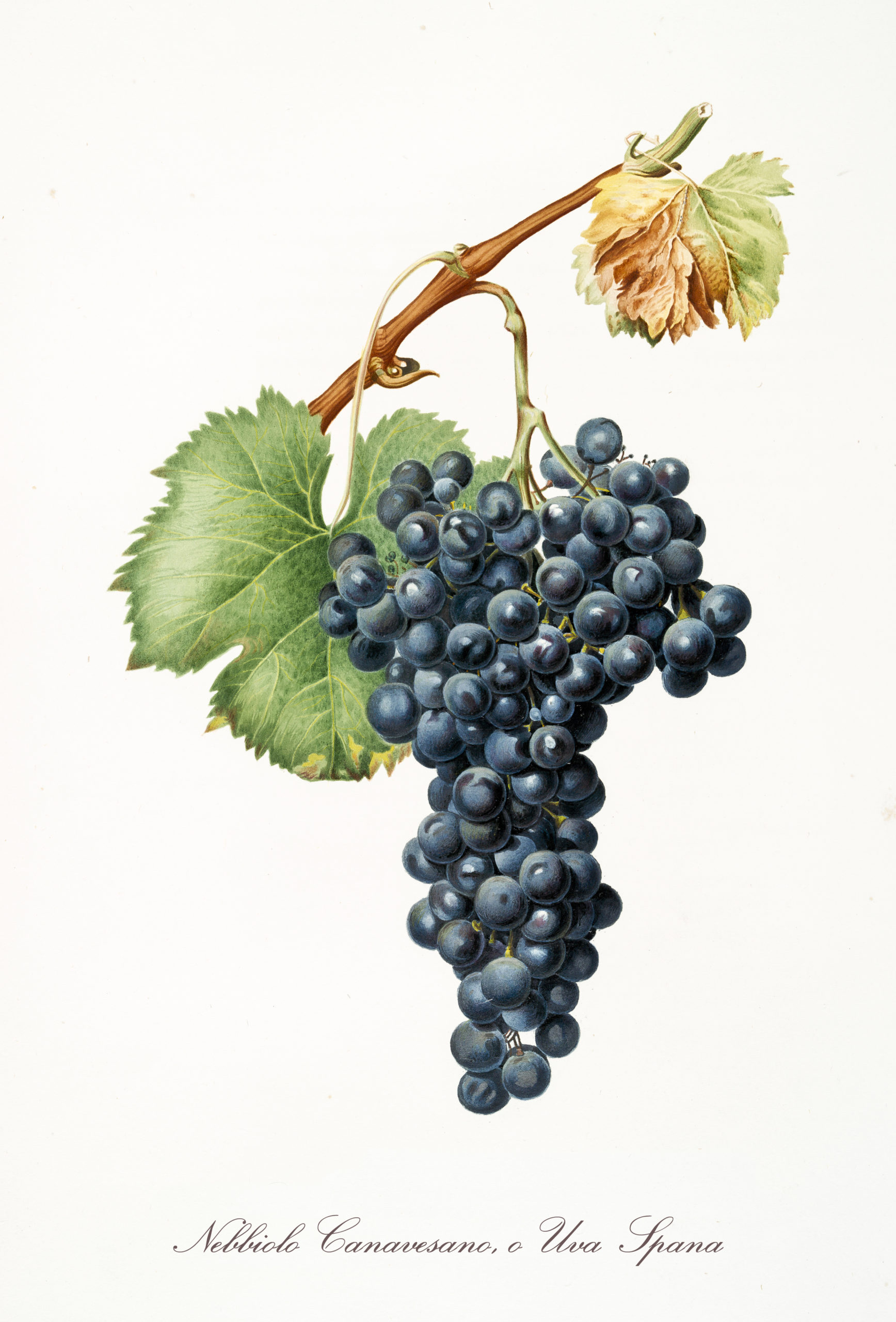Ahh Nebbiolo… A word to the (wine) wise: Never make the mistake of buying a wine you’re uncertain of just because the price tag is high, often times, you’ll be very disappointed.
It has been our experience that in general American consumers are not always well versed with Nebbiolo as a grape. There is no harm in that, with so many grapes in the marketplace and everything vying for your attention (Napa Cabs, Bordeaux blends, Pinot Noirs from around the world, Champagne…the list really just goes on and on) it’s not uncommon for American consumers to become aware of a wine, know there is value behind it, understand the idea of ageable wines being more highly thought of (and priced), and still having never tried one before.
We bring this up as many folks know Barolo (and the slightly lesser regarded Barbaresco) in namesake, associate it with ‘expensive wines’ and know it can age for a very long time. To the common consumer ‘expensive and ageable’ are akin to great Napa Cabs and Bordeaux wines, and thus a very, very important piece of information gets lost along the way: Barolo (or Barbaresco) and Nebbiolo as a grape are NOTHING like a Cab or Bordeaux blend (aside from being very tannic and ageable).
It happens all the time. Someone complains that the Barolo was off-colored, corked, must have turned, “I got a bad bottle,” it’s flawed, etc. The reality is all these statements are normal for the wine and not flaws (well, correctly identifying TCA – or being corked – aside).
“Something is wrong with my bottle, the color is totally off.”
This is commonly misunderstood. Nebbiolo, especially aged expressions, have a brownish, brick color to the wine. Most consumers are not used to seeing this in the glass, and immediately think it’s a flaw or sign something is not right. This is unfortunately very incorrect. Nebbiolo is such an ancient grape that it has color stability issues (something newer grape varieties are cloned and crossed to eliminate as a natural defect). When it’s first produced, it has a very normal red wine coloring, often times referred to as deep in color. However, a year or so in, those color compounds breakdown and begin an exponential decline over the next few years. If you’re looking to Riserva Barolo (or Barbaresco), brick coloring is something you actually want to see, that means it’s perfect!
“It’s corked!”
While it could potentially be the case with any wine, corked Nebbiolo is more often times misidentified. While TCA can make a bottle smell like an old corner of a cellar that’s damp and piled high with wet cardboard, some of that “cellar funk” is desirable in the wine world to a point and indicative of well aged wine, see: Aged Bordeaux blends. This also occurs in Nebbiolo. Most American consumers just jump to the conclusion that an expensive aging wine is supposed to be like a Napa Cab or something akin with rich structure, bold fruits, and dark extracted color in the glass, but that’s definitely not the case. Nebbiolo is actually much closer to a Pinot Noir (Burgundy more specifically) than a Cabernet, so if you’re expecting big, rich, extracted fruits, you’ll be very disappointed. Nebbiolo is more leather, tar, mushroom-y goodness; very earth tone dominated, and is backed up by fruit tones along the lines of strawberry, cherry, or rhubarb – all more in line with Pinot Noir profiles. With age, these turn into those funky earthy tones that are not indicative of corked wine, but well aged and cellared juice.
“It must have turned!”
Like all things in life, you should try to approach new wines like any new experience – with an open mind! No two grapes are alike, as it is, the entire definition of a Sommelier is a wine steward who is well versed in the different grapes, their profiles, and the way they express from specific regions. Why do they get paid the big bucks? Because the average Joe simply doesn’t have the time to know all these things. Most folks just want a glass of wine with dinner or to unwind at the end of a long day. Nebbiolo is unfortunately often caught in the crosshairs of preconceived notions (as we’ve spoken about here and before, it’s price and perception make it expected to be something it really isn’t, or anything like). If you open an aged Nebbiolo expecting something without knowing what you’re getting into, you may feel as though your bottle has turned. It has not. In the wine world we hear this a lot, and it’s hard to tell someone who preconceived a notion of how it should be, was surprised or put off that it wasn’t, then associated that with being bad. You have to work very hard to break down the walls the consumer created simply not knowing what they were getting into and settling on an incorrect conclusion. We often like to think that Pinot Noir breaks hearts, Nebbiolo breaks egos. It’s really an unfortunate circumstance.
So in conclusion, we hope you find this letter on Nebbiolo and it helps you to wipe the slate clean of preconceived notions that are incorrect when approaching this highly sought after wine. Please note that if all you drink is Cab or Merlot, you most likely will not enjoy a Nebbiolo the first time you try it, as it, like all things new, will take a moment to gather a taste for. If you’re a huge fan of Pinot Noir or Sangiovese, you will find a great new friend (and a few less Benjamins in your bank account) with Nebbiolo.
Cheers, to #febisnebb!

